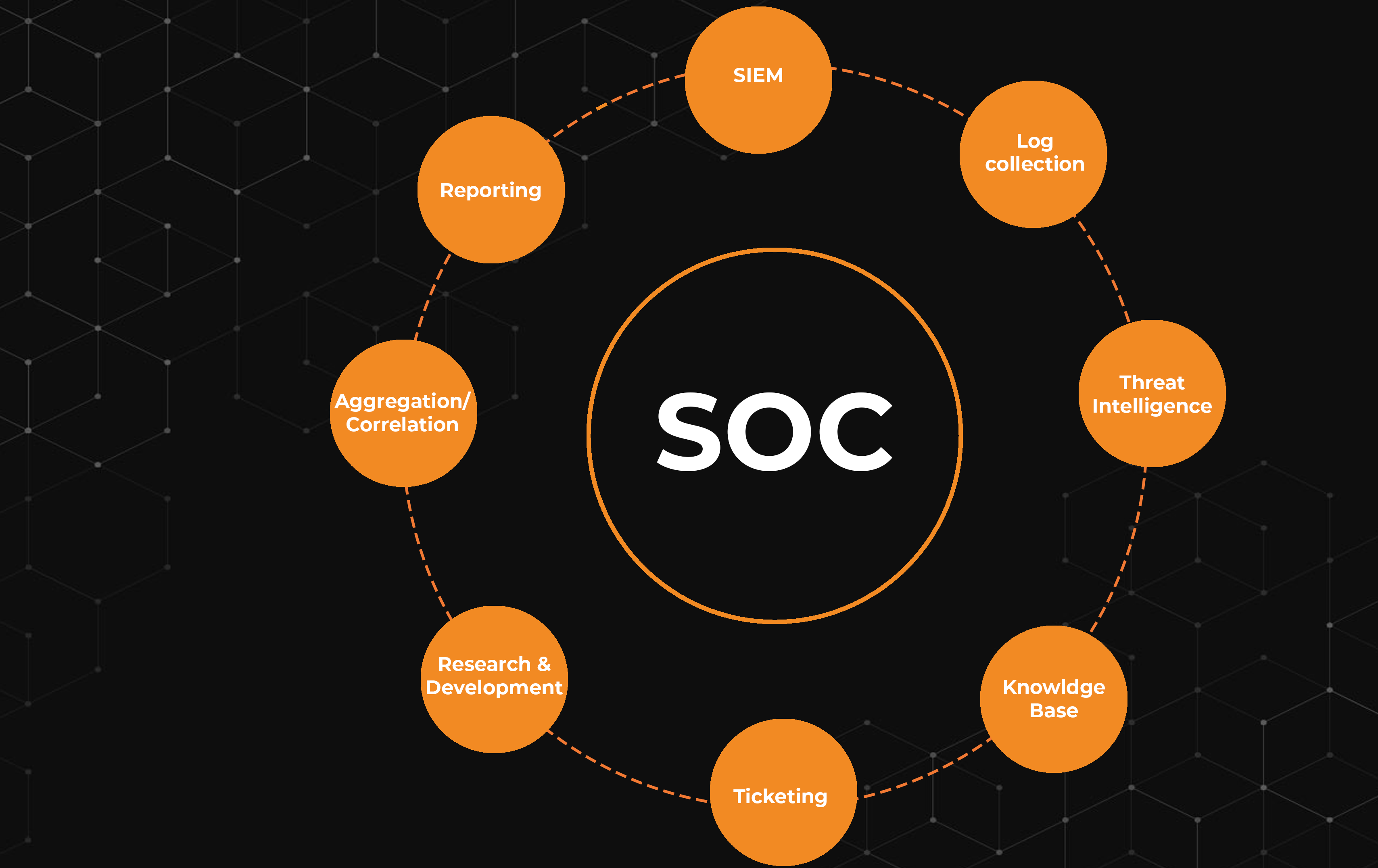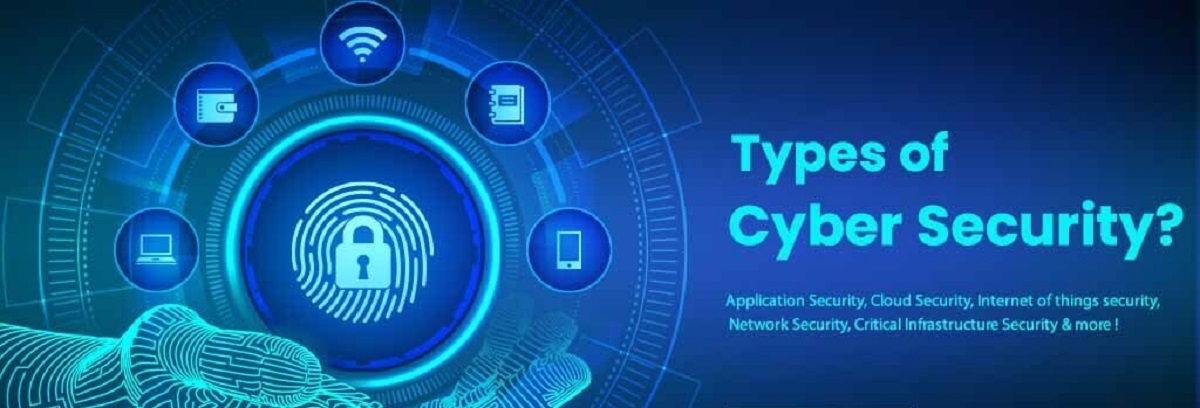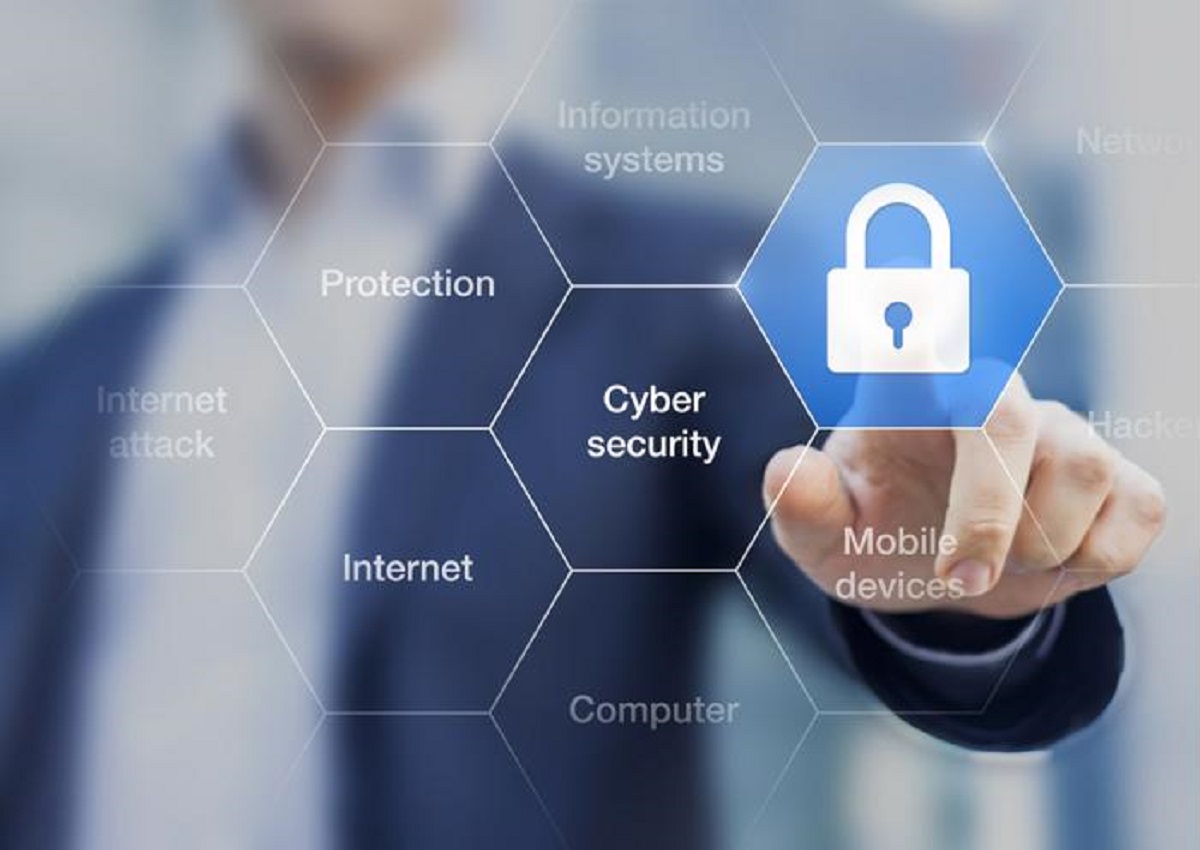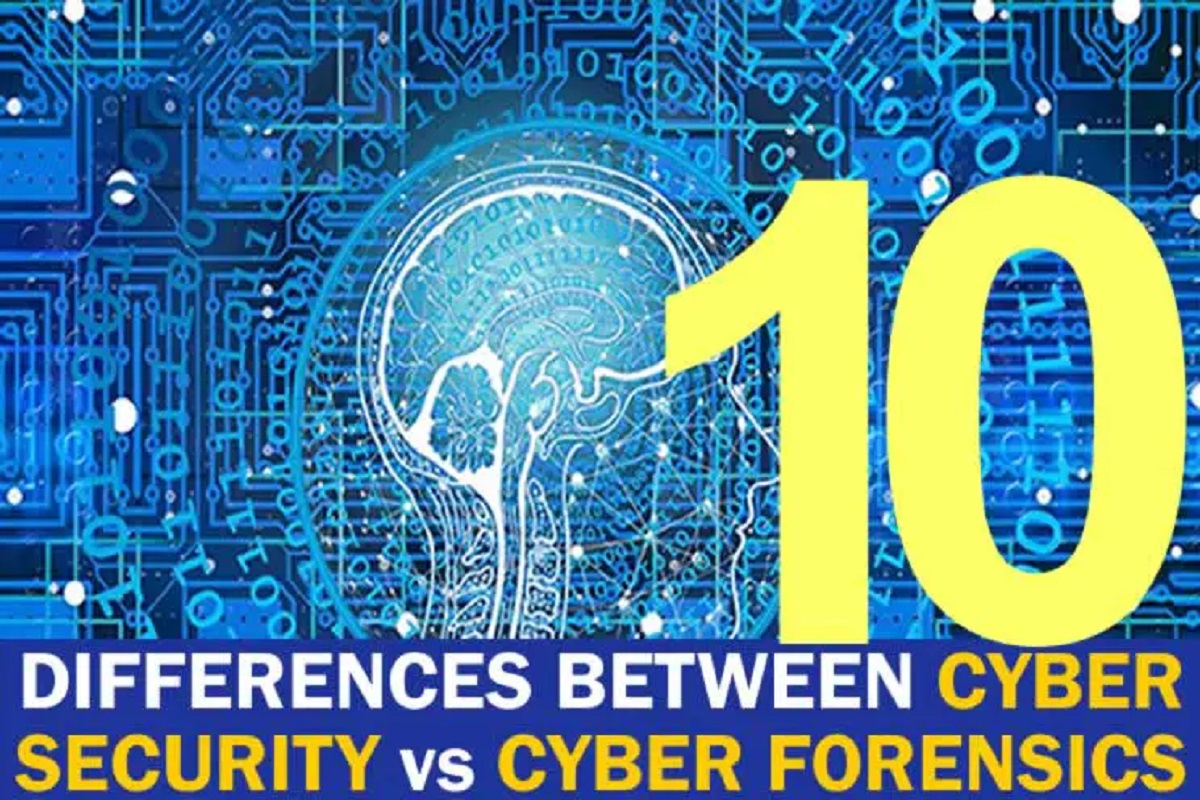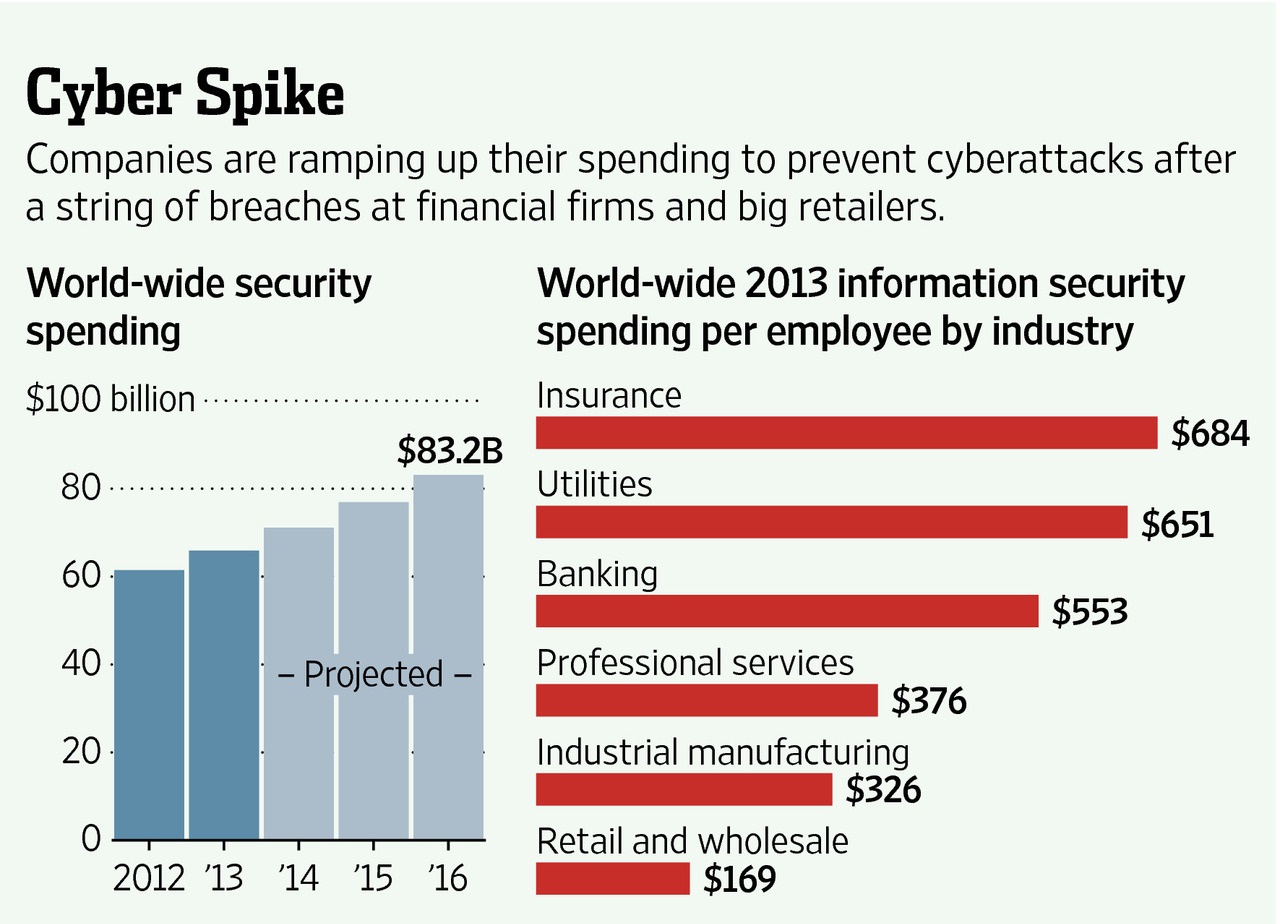Introduction
Welcome to the world of SOC Cybersecurity! In this increasingly digital age, ensuring the security of our sensitive data and protecting ourselves from cyber threats has become more crucial than ever before. SOC Cybersecurity, or Security Operations Center Cybersecurity, plays a vital role in safeguarding organizations, individuals, and their valuable digital assets.
SOC Cybersecurity involves a comprehensive approach to monitoring, detecting, investigating, and responding to potential cyber threats and attacks. It provides organizations with a dedicated team of experts, advanced technologies, and robust processes to defend against cyber threats in real-time.
In this article, we will take an in-depth look at SOC Cybersecurity, its importance, how it works, key components, strategies, benefits, and challenges. By the end of this article, you will have a clear understanding of SOC Cybersecurity and why it is crucial in today’s digital landscape.
So, buckle up and get ready to dive deep into the world of SOC Cybersecurity!
What is SOC Cybersecurity?
SOC Cybersecurity, or Security Operations Center Cybersecurity, refers to the practice of protecting digital assets, networks, and systems from potential cyber threats and attacks. It involves the implementation of proactive measures, detection techniques, and incident response strategies to ensure the overall security and integrity of an organization’s digital infrastructure.
A SOC is a centralized unit responsible for continuously monitoring and managing an organization’s security posture. It comprises a team of skilled professionals who analyze security events, investigate potential threats, and respond promptly to mitigate any risks. The main objective of SOC Cybersecurity is to identify and prevent cyber threats from compromising the confidentiality, integrity, and availability of critical data and systems.
Organizations can establish their own in-house SOC or outsource their SOC functions to managed security service providers (MSSPs). Regardless of the approach, SOC Cybersecurity ensures round-the-clock protection and threat intelligence through real-time monitoring and analysis of security events.
The key activities of SOC Cybersecurity include:
- Monitoring: Continuous monitoring of network traffic, system logs, and security events to identify any suspicious activity or anomalies.
- Detection: Applying advanced threat detection techniques and tools to identify potential cyber threats and vulnerabilities.
- Incident Response: Swift and effective response to security incidents, including containment, investigation, and remediation.
- Threat Intelligence: Collecting, analyzing, and disseminating relevant threat intelligence to stay ahead of emerging trends and evolving cyber threats.
- Proactive Measures: Implementing proactive security measures, such as vulnerability assessments, penetration testing, and security awareness training, to prevent future attacks.
Overall, SOC Cybersecurity serves as a critical defense mechanism against cyber threats, providing organizations with the necessary tools, expertise, and processes to mitigate risks and protect their digital assets.
Why is SOC Cybersecurity important?
SOC Cybersecurity plays a crucial role in today’s digital landscape due to the increasing frequency and sophistication of cyber threats. Here are some key reasons why SOC Cybersecurity is important:
- Protection against cyber threats: Cyber threats, such as malware, ransomware, phishing, and data breaches, pose significant risks to organizations of all sizes. SOC Cybersecurity provides the necessary defense mechanisms to identify, mitigate, and prevent such threats from causing damage to the organization’s digital assets.
- Real-time monitoring: SOC Cybersecurity enables real-time monitoring of networks, systems, and applications. This continuous monitoring allows for the early detection of potential security incidents, allowing organizations to respond swiftly and minimize the impact of the attacks.
- Quick incident response: When a cyber threat is detected, SOC Cybersecurity teams follow predefined incident response processes to investigate, contain, and remediate the security incident. This swift response helps to prevent the escalation of the attack and minimizes the potential damage to the organization.
- Compliance with regulations: Many industries have specific regulations and compliance requirements related to data security and privacy. SOC Cybersecurity helps organizations meet these regulatory requirements and ensures the protection of sensitive customer information.
- Business continuity: A successful cyber attack can disrupt business operations, cause financial loss, and damage an organization’s reputation. SOC Cybersecurity plays a vital role in maintaining the continuity of business operations by protecting critical systems and data from being compromised.
- Enhanced threat intelligence: SOC Cybersecurity operations involve collecting and analyzing threat intelligence from various sources. This helps organizations understand the latest trends in cyber threats and enables them to proactively implement measures to safeguard against emerging threats.
- Increased customer trust: Implementing SOC Cybersecurity measures demonstrates a commitment to protecting customer data and information. This can enhance customer trust and reputation, giving organizations a competitive advantage in the market.
In summary, SOC Cybersecurity is vital for organizations to protect themselves against evolving cyber threats and ensure the security and integrity of their digital assets. By implementing robust SOC Cybersecurity measures, organizations can mitigate risks, respond effectively to security incidents, and maintain a secure digital environment.
How does SOC Cybersecurity work?
SOC Cybersecurity operates through a strategic combination of people, processes, and technology to protect organizations from cyber threats. The process can be broken down into several key steps:
- Planning and Infrastructure Setup: A SOC is established, either in-house or through a managed security service provider (MSSP). The infrastructure, including the necessary hardware, software, and network connections, is set up to facilitate real-time monitoring and incident response.
- Monitoring and Analysis: Continuous monitoring of networks, systems, and applications is performed using advanced security technologies and tools. SOC analysts analyze and correlate security events and logs to identify any potential threats or anomalies.
- Threat Detection and Response: SOC analysts use various detection techniques, such as signature-based detection, anomaly detection, and behavioral analysis, to identify potential cyber threats. When a threat is detected, the SOC initiates an incident response process, which includes containment, investigation, and mitigation.
- Incident Management: Once a security incident is identified and confirmed, the SOC team follows predefined protocols to manage and respond to the incident. This includes triaging the incident, understanding its impact, conducting a thorough investigation, and initiating appropriate remediation actions.
- Threat Intelligence: SOC Cybersecurity teams monitor and gather threat intelligence from various sources, such as internal security logs, external threat feeds, and industry reports. This intelligence is analyzed and used to proactively identify emerging threats and vulnerabilities.
- Continuous Improvement: SOC Cybersecurity is an iterative process. Regular assessments, audits, and feedback loops are implemented to identify areas for improvement and enhance the overall security posture. This includes updating security policies, implementing new technologies, and providing ongoing training for SOC analysts.
Collaboration and communication are vital aspects of SOC Cybersecurity. SOC analysts work closely with other teams within the organization, such as the IT department and incident response teams, to coordinate response efforts and ensure a cohesive approach to security.
Furthermore, SOC Cybersecurity leverages advanced technologies such as Security Information and Event Management (SIEM) systems, Intrusion Detection Systems (IDS), Endpoint Detection and Response (EDR) tools, and Threat Intelligence Platforms (TIP). These technologies provide enhanced visibility into network traffic, system logs, and security events, enabling faster detection and response to potential threats.
Overall, SOC Cybersecurity combines human expertise, robust processes, and advanced technologies to effectively monitor, detect, respond to, and mitigate cyber threats, thereby ensuring a strong defense against evolving risks.
Key Components of SOC Cybersecurity
SOC Cybersecurity consists of several key components that work together to provide comprehensive protection against cyber threats. These components include:
- People: The people component of SOC Cybersecurity comprises skilled and knowledgeable professionals who form the SOC team. This includes security analysts, incident responders, threat intelligence analysts, and SOC managers. These individuals possess expertise in areas such as network security, incident response, threat hunting, and security operations.
- Processes: SOC Cybersecurity relies on well-defined processes and procedures to ensure efficient and effective operations. This includes incident response plans, escalation procedures, change management processes, and regular security assessments. Having documented processes enables the SOC team to respond swiftly and consistently to security incidents.
- Technology: State-of-the-art technology solutions are a fundamental component of SOC Cybersecurity. This involves the use of advanced security tools, such as SIEM systems, IDS/IPS, EDR tools, and vulnerability scanners. These technologies provide the necessary visibility and analysis capabilities to detect and respond to potential threats in real-time.
- Threat Intelligence: SOC Cybersecurity relies on up-to-date threat intelligence to stay ahead of evolving cyber threats. This component involves collecting, analyzing, and disseminating relevant threat intelligence from various sources, including internal security logs, external threat feeds, industry reports, and security research organizations. By leveraging threat intelligence, the SOC team can identify new attack vectors and proactively implement necessary measures to prevent potential threats.
- Data Collection and Analysis: SOC Cybersecurity involves continuous monitoring and analysis of security events and logs generated by various systems and devices. This data collection process allows SOC analysts to identify suspicious activities, detect anomalies, and correlate information to gain a comprehensive understanding of the organization’s security posture. Analysis techniques include log analysis, packet capture analysis, and behavioral analysis.
- Communication and Collaboration: Effective communication and collaboration are essential components of SOC Cybersecurity. SOC teams must establish channels for sharing information, coordinating incident response, and collaborating with other departments and external stakeholders. This ensures a cohesive approach to security and facilitates swift and effective incident response.
Each component plays a vital role in the overall effectiveness of SOC Cybersecurity. By having skilled professionals, well-defined processes, cutting-edge technology, relevant threat intelligence, robust data analysis capabilities, and open communication channels, organizations can establish a strong SOC Cybersecurity framework that helps protect against cyber threats.
SOC Cybersecurity Strategies
SOC Cybersecurity strategies are strategic approaches and methodologies that organizations implement to enhance their security posture and effectively defend against cyber threats. These strategies include:
- Proactive Defense: Proactive defense strategies focus on preventing cyber threats before they occur. This includes implementing robust security measures, such as firewalls, intrusion detection systems, and secure configuration management. Regular vulnerability assessments and penetration testing are conducted to identify and address potential weaknesses before they can be exploited.
- Continuous Monitoring: Continuous monitoring is a core strategy of SOC Cybersecurity. This involves real-time monitoring and analysis of system logs, network traffic, and security events using advanced tools and technologies. Continuous monitoring enables rapid detection of potential security incidents and allows for immediate response and mitigation.
- Threat Hunting: Threat hunting is a proactive strategy that involves actively searching for new and emerging threats within an organization’s network. SOC analysts use their expertise, threat intelligence, and advanced analytics to identify any potential threats that may have evaded traditional security controls. By proactively seeking out threats, organizations can prevent and mitigate potential attacks before they cause significant damage.
- Incident Response: Incident response strategies outline the processes and procedures to be followed in the event of a security incident. This includes defining roles and responsibilities, establishing communication channels, and implementing a well-structured incident response plan. The goal of incident response is to minimize the impact of the incident and restore normal operations as quickly as possible.
- Threat Intelligence Integration: Integrating threat intelligence into SOC operations is an effective strategy to enhance the detection and response capabilities. By leveraging external threat intelligence feeds and sharing information with trusted partners and security communities, SOC teams can stay updated on the latest threats and trends, which helps them proactively defend against evolving attacks.
- Security Awareness Training: A crucial strategy is to educate employees about cybersecurity best practices and the role they play in preventing security incidents. Regular security awareness training programs help employees recognize potential threats, understand their responsibilities in maintaining security, and become proactive participants in the organization’s cybersecurity efforts.
Implementing a combination of these strategies is essential for establishing a robust SOC Cybersecurity framework. Organizations must regularly review and update their strategies to adapt to evolving threats and technologies. By leveraging proactive defense measures, continuous monitoring, threat hunting, well-defined incident response plans, threat intelligence integration, and security awareness training, organizations can enhance their ability to detect, respond to, and mitigate cyber threats effectively.
Benefits of SOC Cybersecurity
SOC Cybersecurity offers numerous benefits to organizations, helping them protect their critical assets and maintain a strong security posture. Some of the key benefits include:
- Improved Threat Detection: SOC Cybersecurity provides organizations with enhanced capabilities to detect and identify potential cyber threats. Through continuous monitoring, advanced analytics, and threat intelligence integration, SOC teams can detect suspicious activities and anomalies that may go unnoticed by traditional security controls.
- Rapid Incident Response: By having a dedicated SOC team and well-defined incident response processes, organizations can respond swiftly to security incidents. This reduces the time between detection and mitigation, minimizing the impact of the incident and preventing further damage to the organization’s systems and data.
- Reduced Downtime: SOC Cybersecurity helps reduce downtime by proactively identifying and mitigating security incidents. By addressing potential threats before they can cause significant disruption, organizations can ensure the continuity of their business operations and avoid financial losses associated with downtime.
- Enhanced Compliance: SOC Cybersecurity aids organizations in meeting regulatory compliance requirements. By implementing security controls, monitoring systems, and following incident response protocols, organizations can demonstrate their commitment to data protection and fulfill regulatory obligations.
- Protection of Reputation and Customer Trust: A successful cyber attack can severely damage an organization’s reputation and erode customer trust. SOC Cybersecurity helps protect against such incidents, showcasing the organization’s commitment to safeguarding customer data. This leads to increased trust and confidence from customers and partners.
- Advanced Threat Intelligence: SOC Cybersecurity operations involve gathering, analyzing, and disseminating threat intelligence. By staying up-to-date with current threats, emerging trends, and new attack vectors, organizations can proactively adjust their security strategies and implement measures to stay ahead of potential threats.
- Cost Savings: While implementing SOC Cybersecurity may require an initial investment, it can result in long-term cost savings. By minimizing the impact of security incidents, organizations can avoid financial losses associated with data breaches, system downtime, regulatory penalties, and reputational damage.
By leveraging SOC Cybersecurity, organizations can gain improved threat detection capabilities, rapid incident response, reduced downtime, compliance with regulations, enhanced reputation and customer trust, access to advanced threat intelligence, and potential cost savings. These benefits collectively contribute to a more secure and resilient organization in today’s digital landscape.
Challenges and Risks in SOC Cybersecurity
While SOC Cybersecurity provides significant benefits, it is not without its challenges and risks. It is essential for organizations to be aware of these potential pitfalls to effectively address them. Some of the key challenges and risks in SOC Cybersecurity include:
- Talent Shortage: There is a high demand for skilled cybersecurity professionals, but a limited supply. Finding and retaining qualified SOC analysts and experts can be a challenge for organizations, leading to potential gaps in security operations.
- Complexity and Volume of Data: SOC operations generate vast amounts of data from various systems and devices. Analyzing and correlating this data can be challenging due to its sheer volume and complexity, potentially leading to delays in threat detection and response.
- Adaptability to Evolving Threats: Cyber threats constantly evolve, and attackers continually find new ways to bypass security controls. SOC teams need to stay updated with the latest threats, trends, and attack techniques to effectively defend against emerging threats.
- Advanced Persistent Threats (APTs): APTs are highly sophisticated and targeted attacks that are challenging to detect and mitigate. APTs often involve stealthy tactics, long-term infiltration, and skilled adversaries, making them a significant challenge for SOC Cybersecurity.
- False Positives and Alert Fatigue: SOC analysts face the risk of dealing with a high volume of false positive alerts, which could distract them from focusing on genuine threats. Alert fatigue can occur when analysts become desensitized to alerts, potentially leading to missed or delayed responses to actual security incidents.
- Technology Limitations: While advanced technologies form a crucial component of SOC Cybersecurity, they are not foolproof. Cyber attackers may find ways to evade detection, exploit vulnerabilities, or bypass security measures. Keeping up with the fast-paced technological landscape requires organizations to continually invest in cutting-edge security solutions.
- Insider Threats: Internal threats, whether intentional or unintentional, pose a significant risk to SOC Cybersecurity. Malicious insiders or compromised user accounts can bypass security controls and access sensitive information, potentially causing substantial damage to an organization.
Addressing these challenges and risks requires a proactive approach. Organizations need to invest in continuous training and professional development for their SOC teams, implement robust analytics and machine learning capabilities to handle data complexity, foster a culture of vigilance against evolving threats, and establish strong insider threat detection and prevention measures.
By staying aware of these challenges and risks, organizations can take proactive steps to mitigate them, bolster their SOC Cybersecurity capabilities, and ensure a strong defense against cyber threats.
Conclusion
In today’s digital landscape, SOC Cybersecurity plays a vital role in protecting organizations from increasingly sophisticated cyber threats. By implementing a strong SOC framework comprising skilled professionals, well-defined processes, and advanced technologies, organizations can enhance their security posture and defend against potential risks.
SOC Cybersecurity offers numerous benefits, including improved threat detection, rapid incident response, reduced downtime, enhanced compliance, protection of reputation and customer trust, access to advanced threat intelligence, and potential cost savings. These benefits contribute to the overall resilience and success of organizations in the face of evolving cyber threats.
However, SOC Cybersecurity does come with its own set of challenges and risks. Talent shortage, data complexity, adaptability to evolving threats, advanced persistent threats, false positives and alert fatigue, technology limitations, and insider threats are some of the key challenges that organizations must address.
Organizations should take a proactive approach to overcome these challenges and mitigate the associated risks. This involves investing in continuous training and professional development for SOC teams, leveraging advanced analytics and machine learning capabilities, fostering a culture of vigilance against evolving threats, and implementing robust insider threat detection and prevention measures.
By understanding the importance of SOC Cybersecurity, organizations can prioritize the protection of their digital assets and maintain a strong security posture. SOC Cybersecurity is a continuous process that requires ongoing monitoring, adaptability, and continuous improvement to stay ahead of new and emerging threats.
In conclusion, SOC Cybersecurity serves as a critical defense mechanism against cyber threats, providing organizations with the necessary expertise, technology, and processes to proactively identify, mitigate, and respond to potential risks. By implementing robust SOC Cybersecurity measures, organizations can navigate the digital landscape with confidence, protecting their data, systems, and reputation.







